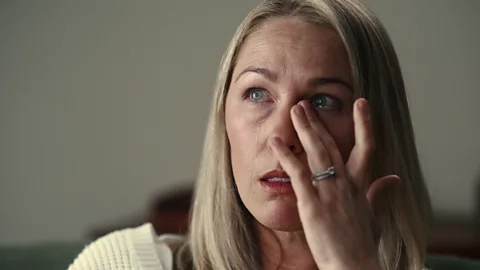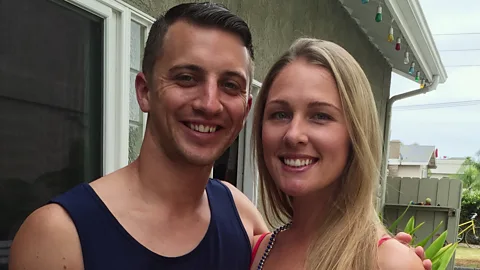American Nightmare: How hit thriller Gone Girl impacted a shocking kidnapping case
 Netflix
NetflixNetflix true-crime series American Nightmare recounts the horrific ordeal of abductee Denise Huskins – and the role the 2014 David Fincher film may have played in her treatment.
In March 2015, a woman from Vallejo, California, Denise Huskins, was kidnapped in the middle of the night from her boyfriend's house, held hostage for 48 hours and raped. However, on her release, as detailed in the new Netflix documentary, American Nightmare, she was not only accused by police of orchestrating the terrifying ordeal, but her case was linked to Gone Girl, the 2014 movie adapted from the best-selling 2012 Gillian Flynn thriller, both by the media, and, allegedly, an investigating FBI agent too. In the film, a sociopathic woman, Amy, (played by Rosamund Pike) concocts an elaborate plan and fakes her own abduction to punish her husband and family.
More like this:
In reality for Huskins, this false characterisation and gross miscarriage of justice violated a vulnerable victim all over again. In episode two of the three-part series – subtitled Gone Girl, and also featuring footage of the film – Huskins relives her disbelief at escaping captivity, then finding herself under interrogation in a police holding room as a suspect. "For the last 48 hours I have been living moment to moment, trying to survive," she says. "The last thing you’re thinking about is: 'If I do survive, I’ve really got to make sure that all of this is believable'."
 Netflix
NetflixThe details of Huskins' case were certainly extraordinary, so much so that the police couldn’t fathom it being real. When it came to the night in question, Huskins and her boyfriend, Aaron Quinn, both provided the same : they were tied up by wet-suit clad intruders, force-fed sedative drugs and had their eyes covered with blacked-out goggles, while a pre-recorded message told them that Huskins would be kidnapped, and freed 48 hours later for a ransom. When Quinn awoke, Huskins had been taken, and he had texts demanding two payments of $8,500 for them to let her go free, on the condition that he didn't call the police.
The Vallejo police did get involved, but just as they began to pin the abduction on Quinn, Huskins reappeared 400 miles away in Huntington Beach, near her parents' houses. She says that she had been told by her abductor that if she told authorities that she had been raped, he would kill her family, so she initially denied this.
But on the very day of Huskins' release, Vallejo police spokesperson Lt Kenny Park told a crowded press conference that the force believed the couple had fabricated the entire thing: "Mr Quinn and Ms Huskins have plundered valuable resources away from our community and taken the focus away from the true victims of our community while instilling fear among our community . So, if anything, it is Mr Quinn and Ms Huskins that owe this community an apology.
Huskins' lawyer Doug Rappaport claims in the documentary that the following day, after an FBI agent interviewed Huskins, the agent raised doubts to Rappaport about whether his client was telling the truth, allegedly saying: "Haven't you seen the movie, Gone Girl">window._taboola = window._taboola || []; _taboola.push({ mode: 'alternating-thumbnails-a', container: 'taboola-below-article', placement: 'Below Article', target_type: 'mix' });
